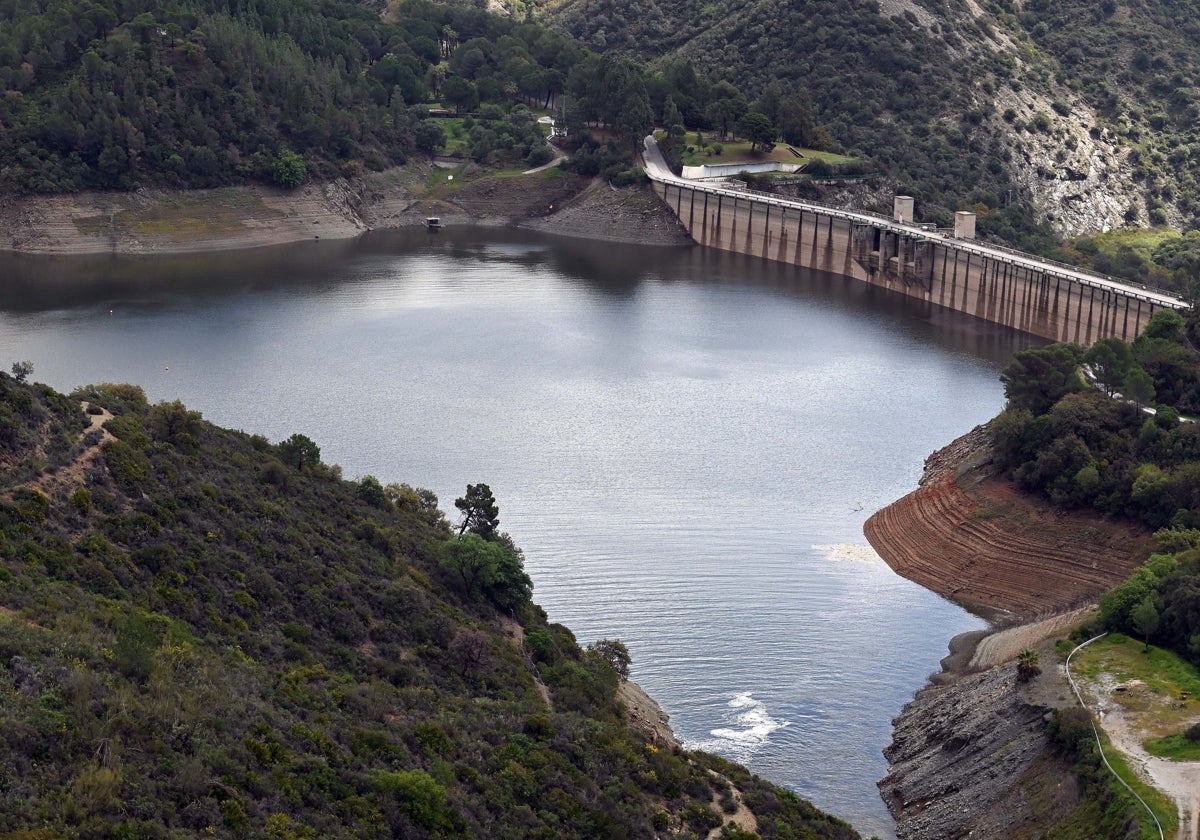Reservoir levels in Malaga show changes to drought status for some areas
The Junta's latest report confirms only two areas as being in "serious" drought status and the province's reservoir levels as stabilised, holding 70 million cubic metres more than this time last year
The latest report by the directorate-general for water infrastructure, part of the Junta's regional ministry of agriculture, reveals some changes when mapping out the drought situation for the province. There are areas that are no longer at the emergency level and others that still are. How these are classified depends on the parameters calculated and set for each water catchment, which must also be maintained for a certain period of time for any changes in status to be made official. The report, prepared at the end of last year, shows how the 'traffic light' system lights up with different colours according to drought status
Normality
Normality is the absence of water shortages, according to the ministry document: "It is a situation in which the indicators show the absence of shortages. It does not correspond to the adoption of temporary measures." So which areas of the province are now back to normal and breathing a sigh of relief? The most important in terms of population is the area dependent on La Concepción reservoir, that would be the western Costa del Sol, which appears to be out of the drought for the first time since the crisis started. Other important areas - the Guadiaro river, the upper basin of the Guadalhorce, Sierra Tejeda, Almijara and Alberquilla - are also out of drought status.
Moderate
The next level of drought, but the least serious category, is the pre-alert or moderate shortage: "A situation that identifies an initial decrease in the available resources that may pose a risk to meeting demand. Saving measures and temporary control of demand may be applied in the event of a risk of aggravation of the situation." At this level, there are now no areas with this coloured pin on the provincial map.
Severe
Severe shortage is clearly an intense situation, with the very clear risk of not being able to meet demand. This is the situation in the lower Guadalhorce basin, although Malaga city could recover to this level if it maintains its present status with its reservoirs currently well above the 71.4 million cubic metres set in the Junta's PES (special drought plan) as the threshold.
Serious
When the water level reaches the bottom of the reservoir and the colour code turns red, the level becomes "serious" and is classed as an emergency situation. This is where Malaga and the area of La Axarquía are at, as both depend on La Viñuela reservoir.
As for the state of the province's reservoirs, according to the latest data updated by the Hidrosur network, they are in a situation of maintaining a certain stability, holding over 170 million cubic metres. At the same time last year they had only 100. They are at around 28% of full capacity.
Reservoirs
La Concepción, between Marbella and Istán, is in a position that has never been seen before: being the reservoir that stores the most water in the province, despite its moderate dimensions. It currently holds more than 38 million cubic metres. The combination of the final phase of the work to gain another 20 million cubic metres per year from the Marbella desalination plant and the Fuengirola and Guadalmansa wells, along with other municipal water resources, offers some peace of mind to the municipalities located between Torremolinos and Manilva.
In Malaga city it will be necessary to continue to draw as much water as possible from the Fahala and Aljaima wells and river flows in this area. Together they account for 20% of the supply at the moment, pending the commissioning in the next few months of the underground resources for a large 'reservoir' from the Bajo Guadalhorce, which could provide up to two thirds of the city's supplies. In the meantime, Emasa (Malaga city's public water company) draws a lot (more or less half of urban consumption) from the more than 13 million cubic metres stored in Casasola, which is actually not a supply reservoir but flood control infrastructure.
The Guadalteba, Guadalhorce and Conde de Guadalhorce reservoirs currently hold 30, 17 and 28 million cubic metres respectively. To put these figures in context, only the latter is in better condition than at this time last year.
In La Axarquía, La Viñuela is at around 36 million cubic metres. This is three times more than this time last year, but it is still classed as "serious". It has now, however, definitively cut its dependence on receiving water from Malaga city and it will have to continue using the wells of the Chíllar as a back-up.
In general, water for agricultural irrigation remains restricted, with minimum contributions being set as aid or relief, requiring the use of recycled water where possible, as in the case of the Axarquía.
As things stand right now, the Axarquía has enough water for urban supply for 18 months, with Malaga city on a similar timescale, while the Costa del Sol can never have much more than seven months of guaranteed supply due to the size of its reservoir. However, the recent link-up with Malaga and the rest of the province through the Rojas pumping station at Churriana, the possibility of receiving water from the Campo de Gibraltar and the desalination plant in Marbella provide a good deal of reassurance.

